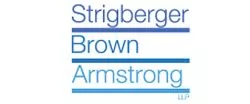The Ontario Court of Appeal concurrently released two eagerly awaited decisions that speak to the interplay between tort damage awards and statutory accident benefits (SABs) under s. 267.8 of the Insurance Act in motor vehicle accident personal injury cases. Cadieux v. Cloutier addressed the deductibility of SABs paid before trial from tort damage awards, while Carroll v. McEwen dealt with the assignment of future SABs to the tort liability insurer.
In a nutshell, the five-judge panel hearing both of these cases held as follows:
- The modern "silo" approach based on the three broad SABs categories (specified weekly benefits, health care benefits and other pecuniary benefits) is preferred over the strict "apples to apples" matching approach in relation to both the deduction and assignment of SABs from tort damage awards
- SABs deductions are allocated between Defendants on the basis of each Defendant's respective liability share (found to be a 50/50 split of the deduction in Cadieux)
- There is no basis for making a temporal distinction between past and future SABs for the purpose of deductibility of SABs settlements from the tort damage award
- Past SABs payments are deductible from the tort damage award even if those payments were made to third parties instead of the Plaintiff directly
- SABs settlements are deductible from the tort award before factoring in the Plaintiff's legal costs of SABs recovery, although those costs may be awarded to the Plaintiff in certain circumstances
- The amendments to theInsurance Act concerning pre-judgment interest on general damages are procedural and apply retrospectively (as considered by MacFarland J.A. more thoroughly in the 2017 Court of Appeal Cobb and El-Khodr decisions)
1. Deductibility of Statutory Accident Benefits from Tort Damages
Cadieux v. Cloutier revolves around a 2006 motor vehicle accident involving a pedestrian (Cadieux) who got into an altercation with another pedestrian (Saywell). Saywell pushed the Plaintiff toward the road, causing him to stumble into the path of a truck being driven by the Defendant, Cloutier, causing a brain injury and multiple orthopaedic injuries. The Plaintiff claimed SABs from his no-fault insurer, Aviva, and also brought a tort action for damages against the Defendants. Before the trial, the Plaintiff settled his SABs claim with Aviva for $900,000 and also settled his tort claim against the Defendant truck driver, Cloutier, vis-à-vis a Pierringer agreement.
After a seven-week jury trial solely against the Defendant, Saywell, the jury awarded damages in excess of $2.3 million. The jury also apportioned liability equally amongst each of the parties involved: 1/3 against the Plaintiff and 1/3 against each of the Defendants, Cloutier and Saywell. Following the jury's verdict, Saywell brought a motion dealing with several issues, including:
A. Should SABs deductibility be based on a strict "apples to apples" comparison of the items in the jury award against the SABs payments received, or is it sufficient that the tort award generally corresponds with the three SABs "silos"?
This issue arose because the jury did not make any specific award for the costs of future attendant care. Instead, the jury awarded over $700,000 for the future care costs of an ABI support worker, which related to medical/rehabilitation benefits – not attendant care benefits. Using an "apples to apples" approach, the Plaintiff argued that only the SABs settlement for medical/rehabilitation benefits ($250,000) should be deducted as opposed to the portion of SABs payments related to attendant care ($350,000). The Defendant, Saywell, argued that both medical/rehabilitation and attendant care benefits were captured within the silo of "health care" expenses and are properly deductible from the jury's award for future care costs.
The trial judge favoured Saywell's argument that SABs deductibility under s. 267.8(4) of the Insurance Act should be interpreted by applying the definition of "health care" under s. 224(1), which includes "all goods and services for which payment is provided by the medical, rehabilitation and attendant care benefits provided for in the SABs" (emphasis added).
The Court of Appeal five-judge panel unanimously upheld the trial judge's preference for the "silo" approach to SABs deductibility, noting that he did not err in reducing the jury's damage award by the SABs received by the Plaintiff for both medical/rehabilitation and attendant care benefits. According to the panel, the strict "apples to apples" matching approach complicates tort actions unnecessarily by focusing on irrelevant labels for heads of damages as opposed to simply matching the tort damage award to the corresponding SABs "silos" of (1) specified weekly benefits, (2) health care benefits and (3) other pecuniary benefits.
B. Is a tort Defendant entitled to deduct 100% of a SABs settlement, or is the deduction allocated amongst Defendants based on their respective share of liability?
Although the Insurance Act is silent on the apportionment of SABs deductions between two or more Defendants, the trial judge relied on the principles of equity and common sense to find that SABs deductions are allocated based on the liability proportion of each Defendant. If the non-settling tort Defendant were to enjoy a 100% reduction from his 1/3 share of damages, he would be unjustly enriched, which would deter pre-trial settlements. The Court of Appeal agreed, finding that the SABs deduction ought to be apportioned 50/50 as between the two Defendants.
2. Assignment of Future SABs to the Tort Liability Insurer
Carroll v. McEwen involved a pedestrian motor vehicle accident occurring in 2009. The Defendant driver/owner (the McEwens) carried $1 million in liability insurance with Aviva, so the Plaintiff also sued her own automobile insurer, Pilot, on the basis of the OPCF 44R endorsement under her policy and the underinsured motorist provisions of the Insurance Act.
Following a seven-week jury trial, the McEwens were found 62% liable, with the Plaintiff bearing 38% contributory negligence. The jury awarded damages in excess of $2.6 million net of the Plaintiff's contributory negligence, including a lump sum award of over $2.2 million for the Plaintiff's "future care costs". The trial judge granted Aviva and Pilot a conditional order that if they paid the judgment in full, they would receive an assignment of the future medical/rehabilitation and attendant care SABs that the Plaintiff received from her no-fault insurer. This could potentially reduce Aviva and Pilot's net liability in the event that the outstanding SABs payments were greater than the excess amount awarded after applying the combined $2 million liability coverage.
The Plaintiff appealed the conditional assignment order for the main reason that it violated the strict "apples to apples" matching principles identified in earlier case law.
For similar reasons outlined in Cadieux, the Court of Appeal ultimately dismissed the Plaintiff's appeal. The Court disagreed with the approach of strict identification and matching between specific SABs benefits and damages for the identical head of damages awarded by the jury within the same silo. In their view, the "silo" approach adopted in Cadieuxshould equally apply to the assignment of future SABs. As the jury's damages award for future care costs exclusively falls within the "health care" silo, the Court of Appeal found that the same was true of future SABs. As such, the trial judge did not err by ordering a conditional assignment of the future medical/rehabilitation and attendant care SABs available to the Plaintiff. The Court of Appeal also varied the conditional order by requiring the Plaintiff to disclose the amount of SABs received following the conclusion of the trial of the tort action.
3. Takeaways
These two important decisions deal with several complex issues in the motor vehicle litigation realm which make them worthy of paying attention to. Overall, the Court of Appeal has no doubt expressed strong support for the more modern "silo" approach as opposed to the strict "apples to apples" matching approach adopted under an earlier and very different legislative regime. At the end of the day, this means that the three broad categories or "silos" of SABs benefits are deductible from the corresponding tort damage award categories. The Court of Appeal has also adopted the same approach and reasoning in relation to the assignment of future SABs granted to tort liability insurers post-trial.
It is notable that the Court of Appeal found that the deductibility of SABs payments from tort awards does not warrant what has been described as the "complicated and cumbersome process" of matching heads of damages in tort to particular SABs benefits. So even if a jury neglects to make a specific tort damage award for "attendant care" expenses, SABs payments for attendant care benefits may still be deductible from the tort damage award for the reason that they are captured within the silo of "health care" as defined in s. 224(1) of the Insurance Act.
Thanks to Cadieux, we also now have another Court of Appeal decision which explicitly recognizes that the Insurance Act amendments regarding the calculation of pre-judgment interest on general damages are procedural in nature and that they apply retrospectively to accidents which took place before the amendments came into effect.
See Cadieux v. Cloutier, 2018 ONCA 903 & Carroll v. McEwen, 2018 ONCA 902(CanLII)
The content of this article is intended to provide a general guide to the subject matter. Specialist advice should be sought about your specific circumstances.

